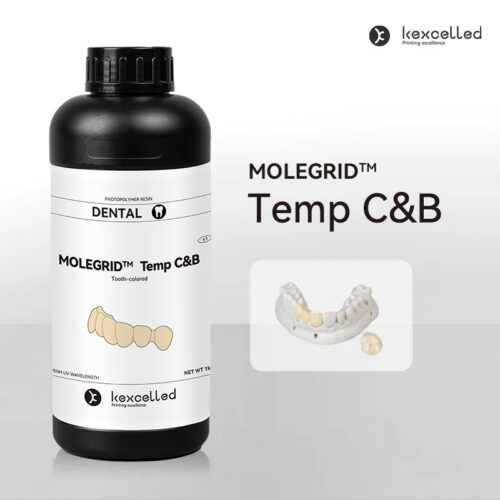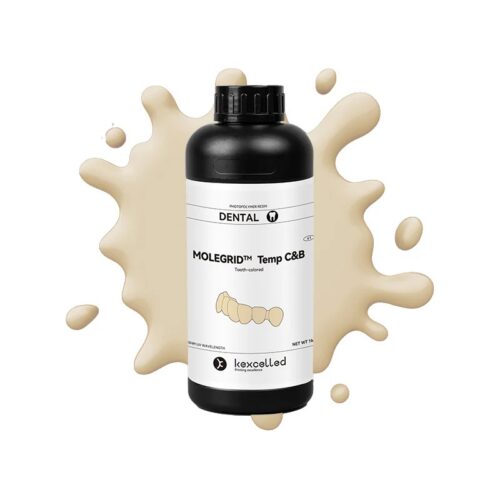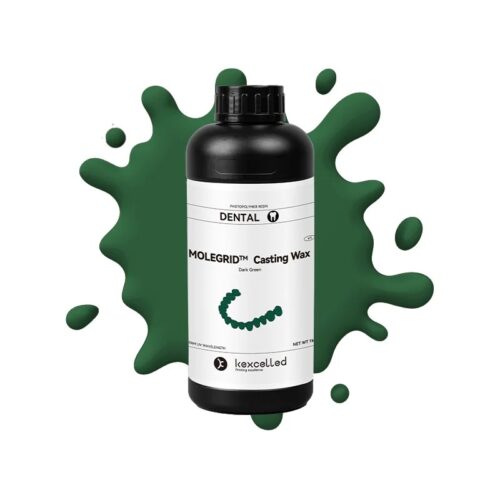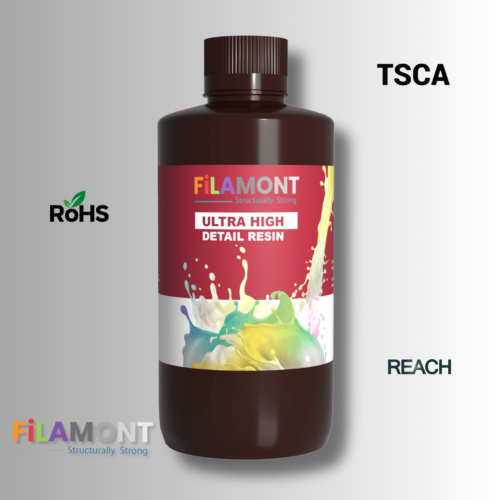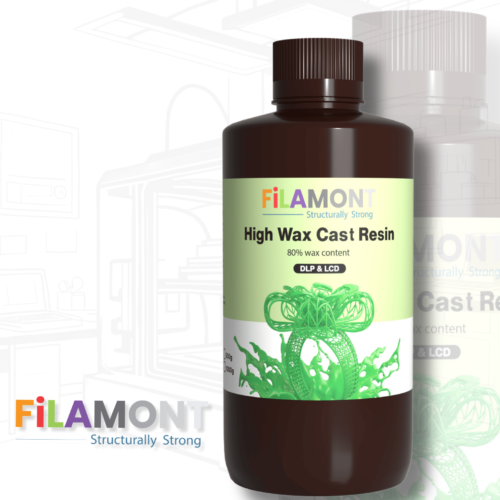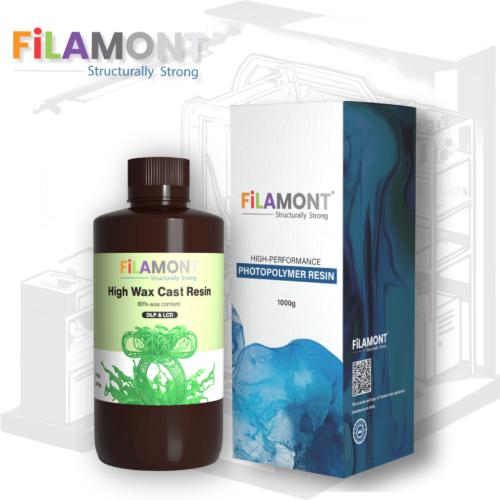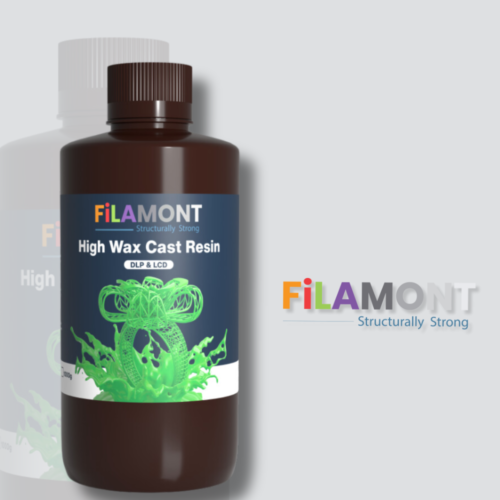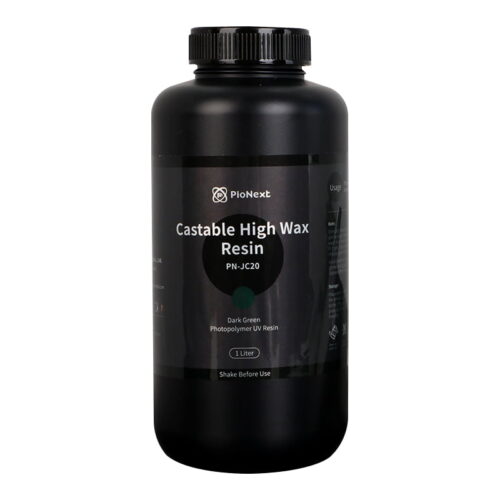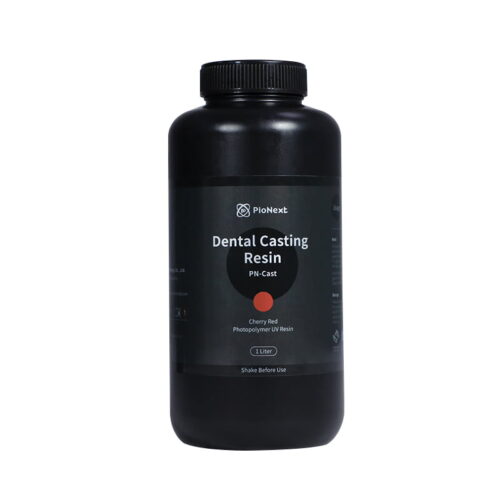Casting Resins
MOLEGRID™ Temp C&B Tooth-Colored Dental Resin – Aesthetic Temporary Restorations with Clinical Strength
₹13,499.00 Incl. of all taxesMOLEGRID™ Casting Wax Resin – High-Precision Dental & Jewellery Casting Now in India
₹8,499.00 Incl. of all taxesFiLAMONT High Wax Cast Resin (500g) Jewelry 3D Printing Resin
₹7,999.00 Incl. of all taxesFiLAMONT High Wax Cast Resin (1000g) Jewelry 3D Printing Resin
₹14,999.00 Incl. of all taxesJamgHe High Wax Plus Jewelry Direct Castable 3D Printing Resin Green 500g
₹7,999.00 Incl. of all taxesJamgHe High Wax Plus Jewelry Direct Castable 3D Printing Resin Green 1000g
Original price was: ₹19,999.00.₹14,999.00Current price is: ₹14,999.00. Incl. of all taxesPionext Castable High Wax Photopolymer 3D Printer Resin (500ml)
₹7,199.00 Incl. of all taxesPionext Dental Casting Photopolymer 3D Printer Resin
₹9,999.00 Incl. of all taxesCasting Resin Guide — Pick the Right Casting Resin for High-Detail Prototyping (Protomont Technologies)
Protomont Technologies of Mumbai specializes in offering premium casting resin and castable resin solutions for various professional applications, from resin-based 3D printing, jewelry making, mold creation or rapid prototyping to rapid prototyping. Our carefully chosen selection of casting resin products provides exceptional quality and performance; whether used for resin 3D printing, jewelry making, mold creation or rapid prototyping our resin selection provides quality and performance like no other! Filamont, Pionext and Elegoo resin brands are widely recognized for their high fluidity, low shrinkage minimal shrinkage low odor as well as exceptional dimensional accuracy – qualities which make our casting resin ideal for DLP or LCD printers to produce flawless surface finishes and HD prints alike!
Our casting resin solutions consist of high-grade epoxy and polyurethane resins designed to ensure accurate printing techniques with smooth results. No matter whether you are a professional jeweler crafting fine jewelry molds or an amateur prototype designer creating intricate prototypes, our resins offer sharp detail resolution and superior print quality. Additionally, our castable resin solutions are perfect for investment casting applications with clean burnout and high precision requirements. Filamont High Wax Cast Resin in 100% Golden Yellow or 80% Dark Green offers great SLA resin jewelry casting capabilities while Pionext Castable High Wax Resin provides precise detail accuracy with smooth finishes for industrial and dental applications requiring higher accuracy and detail requirements.
FiLAMONT Jewelry 3D Printing Resin comes in 500g and 1000g sizes to meet varying project needs, perfect for large-scale jewelry casting resin workflows. Additionally, for those seeking eco-conscious choices without compromising quality or performance we also provide plant-based resins, water washable resins and eco-friendly epoxy casting resins as options – making sure you make decisions that make a positive contribution while still remaining quality or performance choices.
At Protomont Technologies, whether you are an enthusiast or professional, we offer the finest casting resin and castable resin solutions as well as expert guidance to select the appropriate materials for any project. With our high-grade resins we ensure successful results, safe usage, and optimal performance every time.
Casting resins encompass a wide range of liquid polymer systems epoxy, polyurethane, etc that cure into solid parts in molds. These materials underpin small-batch production, jewelry casting and fine-detail prototyping. The right choice of resin and the right process can mean the difference between brittle, warped casts and strong, precise parts that match CAD models. In lostwax (investment) casting, castable resins are specialized formulas often highwax content engineered to burn out cleanly. They decompose under heat with virtually no ash or porosity, ensuring metal flows into every intricate feature.
In contrast general casting resins simply refer to any pourable polymer epoxy, PU, silicone etc used to make parts via molding Casting resins are therefore especially prized in jewelry and dental work for their predictably expanding burnout and faithful detail reproduction.
Main Resin Types and Best Uses
Polyurethane (PU) resins: Widely used for functional prototypes and low-volume production. PU casting resins cure to tough, wear resistant plastics with low shrinkage so parts hold close to design dimensions. They offer excellent impact strength and abrasion resistance; many formulations have a broad hardness range (flexible to hard) to suit different parts. Low shrink engineering grade PU is ideal for mechanical prototypes or end use components requiring stability and toughness.
Epoxy resins: Epoxy based casting resins cure into very hard, glossy plastics with high chemical and heat resistance. They bond well and are often used for coatings, laminates or potting electrical components. However, epoxies generally shrink more and are less flexible than PU making them more prone to brittleness and stress if poured thick. In practice epoxies shine as clear finish coats, adhesive glues or encapsulants for electronics rather than shock resistant prototypes.
Casting (high-wax) resins: These are resin blends (often 70–90% wax) formulated for investment casting. Castable resins burn out in a standard jewelry kiln without residue, leaving a void for molten metal. They reproduce fine detail and undercuts cleanly. Brands like Phrozen and Siraya Tech sell castable jewelry resins that offer low-shrink, high-precision prints specifically for metal casting.
Silicone (for molds): Platinum-cure RTV silicone rubbers are essential for making flexible molds (not final parts). They cure to a soft to medium rubber that is very tear resistant and exhibits almost no long term shrinkage. A mold hardness around 60–75 Shore A is common: firm enough to support the cast but still elastic for demolding. These silicones flow easily and capture even micro-textures. In short, high-quality platinum silicones yield durable dimensionally stable molds that reproduce intricate details perfectly.
Why Choice Matters for 3D Printing and CNC Masters
In resin 3D printing (SLA/DLP/LCD), the resin formulation must be tailored for printing performance: typically very low viscosity and low polymerization shrinkage. High speed printers require resins that flow quickly between layers. If the resin is too thick it cannot refill the gap between layers fast enough, causing bubbles or delamination. Low viscosity casting or engineering resins therefore enable ultrafine features and tight tolerances in printed masters.
Similarly when using CNC-machined masters and vacuum casting material matching is key. For example vacuum cast polyurethane replicas of an ABS or metal master will match the original dimensions closely if the mold and resin have compatible thermal expansion. In fact, vacuum casting can achieve injection molding level accuracy: the process yields high accuracy, bubble free parts with smooth finishes. Picking a stable, low shrink silicone for the mold and a low shrink PU resin for parts helps ensure the master and castings have consistent sizes and mechanical behavior.
Quick Best Practices
- Match resin to function: Use casting resins when you need a burnout pattern for jewelry or dental casting resin. Use polyurethane for robust mechanical prototypes and epoxy for hard, clear parts or coatings.
- Control cure and exotherm: Large pours can heat up and shrink more during cure. Using long pot-life or slow-reacting systems (or pouring in layers) spreads out the exotherm, reducing heat build-up. Mixing resin in smaller batches and pouring thinner layers prevents distortion.
- Degas and pressure cast: Remove trapped air by vacuum degassing the mixed resin before or after pouring. Then pressure casting (e.g. 60–100 psi) will collapse any residual microbubbles during cure. Pressure-cast parts have far fewer visible bubbles than open pours.
- Use high quality platinum RTV molds: Professional platinum silicones cure to tear resistant rubbers with very low shrink. A Shore hardness in the mid-60s strikes a good balance: molds stay dimensionally stable but can still be peeled off complex shapes.
- Weigh and mix accurately: Resin systems rely on precise ratios. Even slight deviations from the manufacturer’s mix ratio can cause incomplete cure or soft spots. Always use a digital scale to measure resin and hardener to the milligram.
- Post-cure parts: After initial molding heat curing the part if the resin allows will drive the final polymerization. Longer post curing increases hardness and improves mechanical stability.
Essential Tools for Reliable Casting
- Vacuum chamber & pump: For degassing resins before pouring.
- Pressure pot: To pressure cast parts and squeeze out microbubbles.
- Precision scale: For accurate resin-hardener ratios.
- Standard accessories: Mixing cups, stir sticks, mold release agents, gloves and optional convection oven for post curing.
By combining the right materials with proper technique, hobbyists and engineers alike can cast crystal clear, high detail parts every time. Avoid polyester or generic epoxy casting for precision work as they usually shrink more and can prematurely wear out molds.
What Sets Protomont Technologies Apart
Protomont Technologies (Mumbai) specializes in engineering grade casting and casting resins with industrial tolerances. Unlike hobby suppliers, Protomont stocks premium low shrink PU and epoxy systems and offers technical support for demanding workflows. We carry trusted brands (Filamont, Pionext, Elegoo) and eco-conscious options (water washable and bio based resins) so you get both performance and sustainability. Whether you’re a jeweler product designer or model maker our experts can recommend the optimal resin and process. Contact Protomont Technologies for material samples, prototyping advice or small batch production services.

